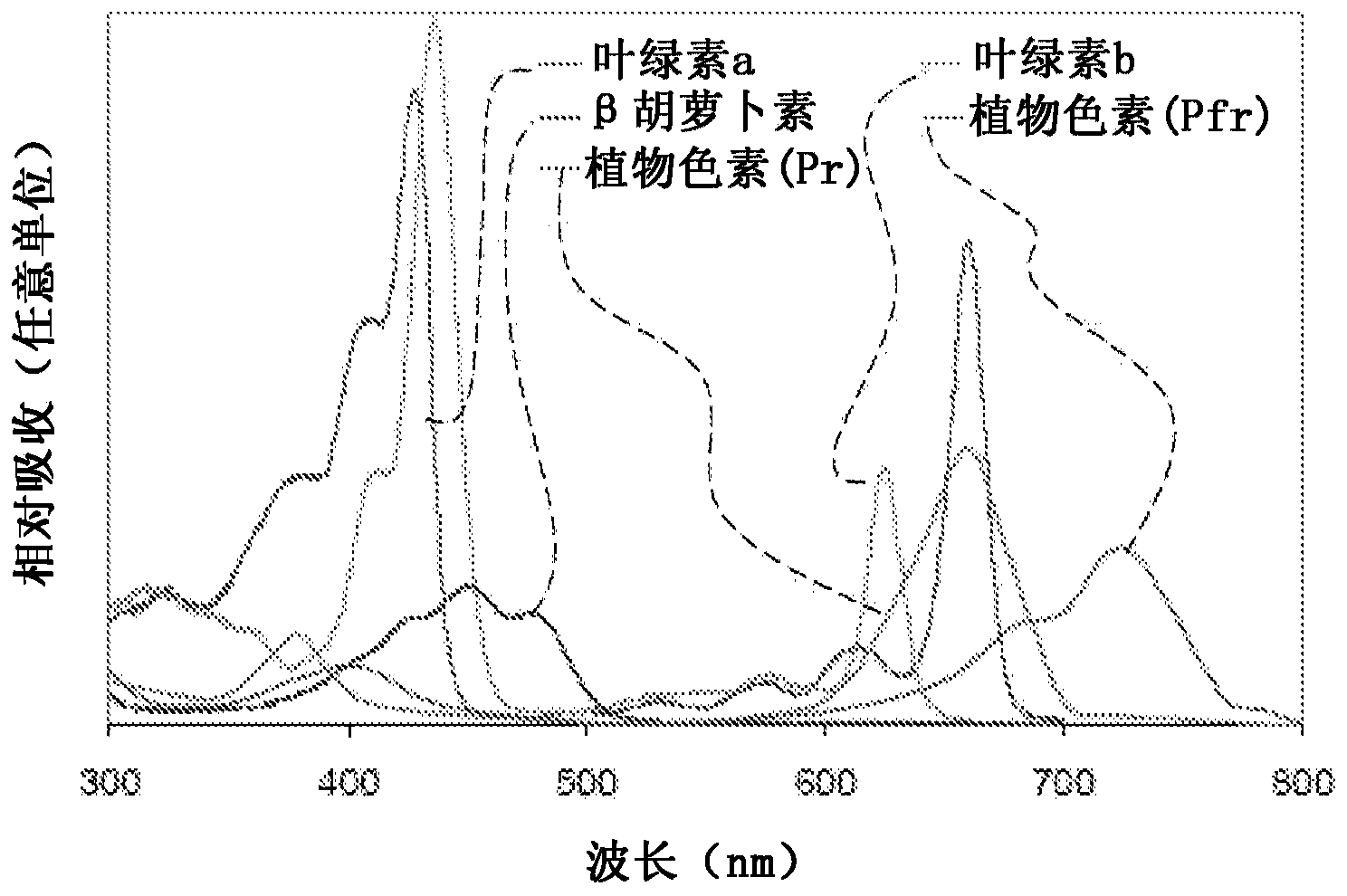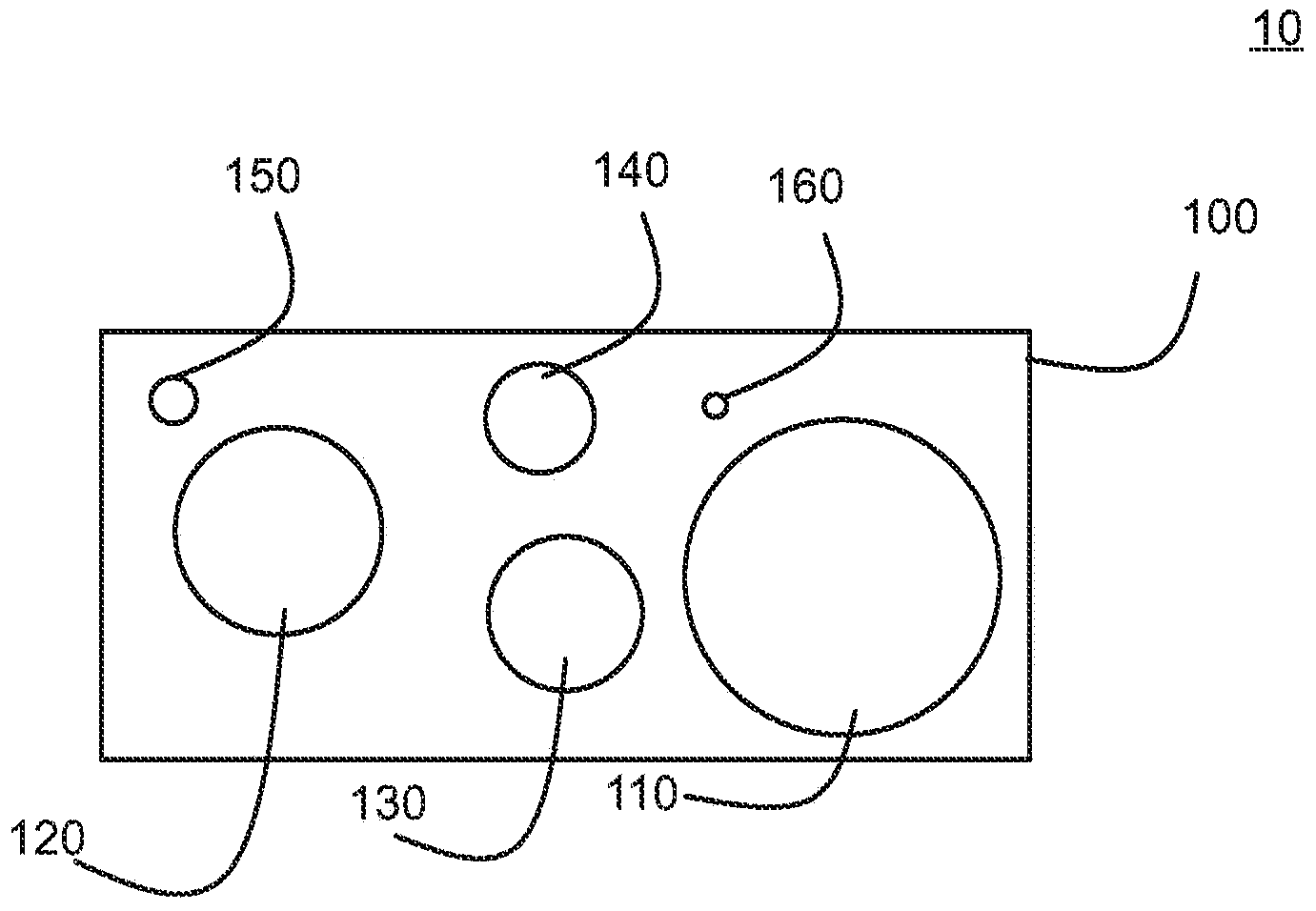Plant illumination device and method
A lighting device and lighting method technology, applied in the directions of botanical equipment and methods, horticultural methods, greenhouse cultivation, etc., can solve the problems of not allowing emission spectrum analysis and tuning, poor main light source, poor quality harvests, etc., and achieve improved light form Form control, excellent energy efficiency, and optimal spectral tuning
- Summary
- Abstract
- Description
- Claims
- Application Information
AI Technical Summary
Problems solved by technology
Method used
Image
Examples
Embodiment Construction
[0075] Figure 1B Illumination device 100 is shown comprising a plurality of quantum dots 110, 120, 130, 140, 150 and 160 of different sizes. The size distribution of quantum dots comprises quantum dots of different sizes in the range of 2nm to 200nm, ie quantum dots 110 typically have a diameter of 200nm and quantum dots 160 have a diameter of about 2nm.
[0076] Electric power and electrodes (not shown) are used to generate an electric field to excite electrons in the quantum dots in a conventional manner. As an electron relaxes to a lower energy state, it emits a photon whose wavelength is determined by the energy difference between the excited and relaxed state. These emitted photons generate the emission spectrum of the lighting device 100 .
[0077] In some embodiments, quantum dots 150, 160 are configured to transmit UV / blue light in the range of 250nm to 400nm, quantum dots 140 and 130 are configured to transmit green and / or yellow light from 400nm to 600nm, and quan...
PUM
| Property | Measurement | Unit |
|---|---|---|
| Fwhm | aaaaa | aaaaa |
Abstract
Description
Claims
Application Information
 Login to View More
Login to View More - R&D
- Intellectual Property
- Life Sciences
- Materials
- Tech Scout
- Unparalleled Data Quality
- Higher Quality Content
- 60% Fewer Hallucinations
Browse by: Latest US Patents, China's latest patents, Technical Efficacy Thesaurus, Application Domain, Technology Topic, Popular Technical Reports.
© 2025 PatSnap. All rights reserved.Legal|Privacy policy|Modern Slavery Act Transparency Statement|Sitemap|About US| Contact US: help@patsnap.com



